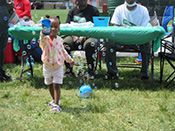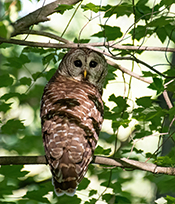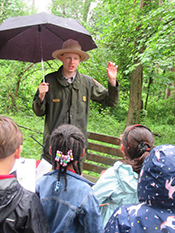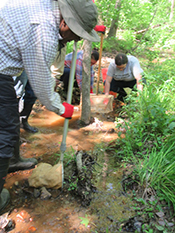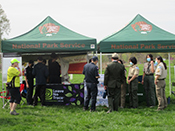On June 18, 2022, the Friends of Dyke Marsh again participated in the annual Gum Springs Community Day and celebrated Juneteenth with our friends.
News
Many people have been captivated by owls in Dyke Marsh this spring. Several people have confirmed a barred owl (Strix varia) pair raising two young and a great horned owl pair (Bubo virginianus) with one young. It’s parenting at its best.
On May 24, 2022, partnering with National Park Service Ranger Douglas Breton, the Friends of Dyke Marsh welcomed 60 curious, second-grade students and their teachers from Alexandria’s St. Stephens and St. Agnes School to Dyke Marsh.
Since 2016, FODM volunteers have conducted habitat quality monitoring in an unnamed, intermittent stream that flows through Mount Vernon Park into west Dyke Marsh, most recently on April 11 and May 10, 2022.
From plastic bottles to plastic straws, fishing lines, clothing, carpets and diapers, plastic in the environment is ubiquitous. Sarah Kollar from Ocean Conservancy and Kurt Moser from the Four Mile Run Conservatory Foundation discussed both the challenges of and solutions to plastic pollution in presentations at a May 19, 2022, FODM meeting.
In April 2022, the Friends of Dyke Marsh reached out to the larger community when we participated in two community events and offered materials and information about FODM and Dyke Marsh.

